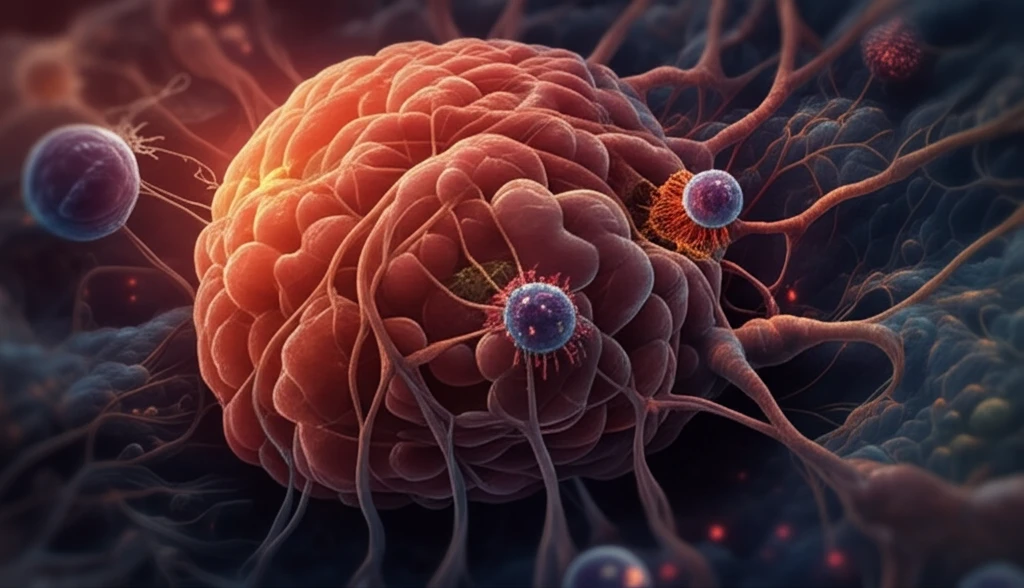
Decoding Liver Cancer: How Immune Biology and Disease Progression Shape Treatment Strategies
"A Deep Dive into Hepatocellular Carcinoma: Uncovering the Molecular Mechanisms for Better Immunotherapies"
Hepatocellular carcinoma (HCC), a prevalent and aggressive form of liver cancer, poses a significant global health challenge. Arising from chronic liver diseases such as hepatitis B and C, non-alcoholic fatty liver disease, and excessive alcohol consumption, HCC is characterized by its complex progression and poor prognosis. Understanding the molecular intricacies driving HCC development is crucial for devising more effective therapeutic interventions.
Recent advancements in genomic sequencing have shed light on the genetic alterations underlying HCC, revealing potential therapeutic targets. However, the disease's protracted development and heterogeneous nature suggest that additional biological processes, including epigenetic modifications and immune microenvironment dynamics, play pivotal roles. A comprehensive analysis of these factors is essential to fully grasp the HCC progression landscape.
Given the indolent nature of HCC, the interactions between the tumor environment and cancer cells are significant during disease progression. This article delves into a detailed transcriptomic analysis of HCC, exploring how disease stage and immune responses are intertwined. By examining gene expression patterns in tumor and non-tumor tissues, we aim to uncover novel insights into HCC biology and potential strategies for earlier, more effective immunotherapies.
Unveiling the Immune Landscape in Hepatocellular Carcinoma

To comprehensively investigate the biological features associated with HCC progression, researchers conducted a detailed analysis of whole-transcriptome RNA-Seq data from cirrhotic and HCC tumor specimens. The tumor samples were clinically staged from T1N0M0 to T3N0M0, indicating varying degrees of tumor advancement. The study's findings reveal a persistently down-modulated tumor immune environment, suggesting that as HCC progresses, the tumor's ability to elicit an effective immune response diminishes.
- Extracellular Matrix and Fibrosis: Elevated expression of genes associated with extracellular matrix and fibrosis suggests a physical barrier preventing T cell infiltration into the tumor.
- Epithelial-Mesenchymal Transition (EMT): EMT is a process where epithelial cells transform into mesenchymal cells, promoting tumor invasiveness and immune evasion.
- CD8+ T Cell Exclusion: The peri-tumoral location of CD8+ T cells indicates an exclusion phenotype, where T cells are unable to penetrate the tumor mass and exert their cytotoxic effects.
Future Directions: Combining Immunotherapy with Anti-Fibrotic Therapies
Given the significant role of fibrosis in creating an immunosuppressive environment, targeting fibrosis may enhance the efficacy of immunotherapies in HCC. Preclinical studies using a TGF-β neutralizing antibody in a murine HCC model demonstrated that ameliorating the fibrotic environment could facilitate the redistribution of CD8+ lymphocytes into tumors. These results provide a strong rationale for utilizing immunotherapies in HCC earlier during treatment, potentially in combination with anti-fibrotic therapies to improve patient outcomes.
